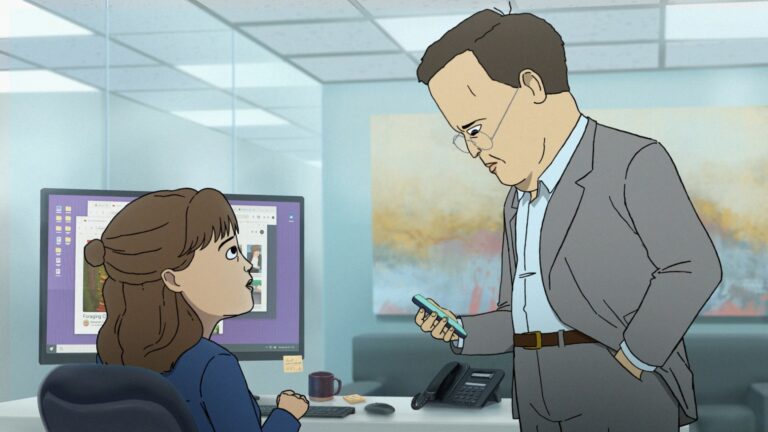It’s hard not to grin when “Common Side Effects” launches into its delicious send-up of Big Pharma and miracle cures. But here’s the wild part: what seems like over-the-top satire actually hooks deeply into real events and genuine science. After some hearty fact-digging, I can tell you — the truth behind the show is often just as jaw-dropping as the fiction. So, buckle up. Let’s dive into the actual research, notorious scandals, and scientific headlines that helped shape the world of CSE. The truth, as always, is a little weirder than you’d expect.

Fungi: Not Just for Pizza Anymore
Let’s start where so many miracle medicines began: the humble fungus. Penicillin stole the scene back in the early 20th century, plucked from a moldy petri dish. It became our first great bacterial antibiotic, turning infections that once killed millions into mere inconveniences. Fast-forward to the present, and the “miracle fungi” vibe is bigger than ever.
Recent years saw psilocybin — the famed “magic mushroom” compound — escalate from hippie lore to “breakthrough therapy” status with the FDA. In 2023, the agency gave psilocybin-assisted therapy a fast track, pushing it through clinical trials for stubborn depression that laughs at traditional drugs. The research isn’t just promising; it’s headline-grabbing. Sufferers of major depressive disorder who felt stuck on the hamster wheel of SSRIs are now finding hope in a mushroom that’s been around since before we could spell “serotonin.” So yes, next time CSE’s plot pivots on a fungus discovery, just know — reality is right in step.
When the House Always Wins: Big Pharma’s Side of the Story
What fun would the show be without a little corporate shade? “Common Side Effects” throws plenty, and for good reason. Real scandals gave the creators mountains of material. Take Teva Pharmaceuticals, for instance. In October 2024, this pharma giant handed over a whopping $450 million in settlement money. Why? The U.S. Justice Department found Teva pumped charitable donations into foundations, all so patients could afford Copaxone — its expensive multiple sclerosis drug. On paper, it sounds sort of noble. But here’s the kicker: while appearing to “help,” Teva jacked up Copaxone’s price, netting billions. Makes you wonder if charity always begins at home, or just in the boardroom.
Over in China, AstraZeneca’s leaders learned the hard way that karma works fast. Chinese authorities detained several of the company’s top brass during a 2024 anti-graft blitz. Senior exec Leon Wang — once the rising star behind AstraZeneca’s second-biggest market — suddenly had a lot of time to reflect. The ripples forced the company to hit ‘pause’ on some projects. So, next time CSE’s Big Pharma tycoons look a little nervous, remember: it’s not just in the script.
The Opioid Blame Game: When Real Life Gets Even Darker
The opioid epidemic looms large not just in real headlines but in the show’s biting humor, too. Purdue Pharma, more than any other company, set the tragedy in motion with OxyContin. Pushed aggressively despite warnings, Oxy’s label famously played down risks of addiction. Doctors, egged on by slick marketing, handed out scripts like Halloween candy. By the late 2010s, lawsuits stacked up faster than unpaid ER bills. In 2020, Purdue agreed to pay out $8.3 billion and basically admitted it helped fuel a national crisis. Their words, not mine: company officials confessed conspiring with others to help doctors prescribe without “a legitimate medical purpose.” Hard to make that up, right?
But Purdue wasn’t alone in chasing profits down rabbit holes. Insys Therapeutics joined the party with Subsys, a fentanyl spray designed for cancer pain. Some execs decided regular doctors needed to prescribe the drug for any pain at all. Court records detail a wild tale of bribed physicians, fake speaking gigs, and suitcases of money. In 2019, the feds nabbed multiple Insys leaders who went from lab coats to orange jumpsuits. The company folded that same year, leaving behind one massive cautionary tale.
Price Games and Greed: The Ongoing Soap Opera
You can’t talk about the pharmaceutical world without zooming in on high prices and murky under-the-table deals. Just look at Bayer’s showstopper settlement. In 2022, the company found itself cutting a $40 million check to put to bed a slew of federal claims. Prosecutors accused Bayer of paying kickbacks, hiding risks, and even pitching drugs for uses not approved by the FDA. The story hit every PR nightmare checkbox: doctors taking gifts, hospitals getting “help,” and the public learning — again — that drug marketing can be darker than late-night infomercials.
And just when you think that’s all the drama, here come the pharmacy benefit managers. These PBMs might sound dull. But in reality, they were the secret hand in America’s medicine cabinet, marking up the cost of drugs treating cancer and HIV, then collecting $7.3 billion in profits between 2017 and 2022. The Federal Trade Commission released a bombshell report spelling it all out. Big names — CVS’s Caremark, Cigna’s Express Scripts — landed right in the crosshairs. Patients paid more while PBMs laughed to the bank, all perfectly legal. So, the next time CSE’s writers imagine a character staring at an astronomical bill for miracle pills, they’re not exaggerating. They’re just reading the latest headlines.
A Peek Behind CSE’s Curtain: How the Writers Turn Scandal into Laughs
You might wonder, do the CSE writers just make up these jaw-dropping twists? Actually, they keep a close eye on everything from Senate hearings to university science journals. They’re fans of the weird, the true, and the barely believable.
- Every time a real-life pharma exec jets off in a private plane after a public apology, the show has new material.
- Whenever FDA regulators face-off with a marketing team hawking a depression “cure” with shoddy science, that’s another CSE subplot being scribbled.
- Without real biotech breakthroughs — those legit “miracle fungi” discoveries — the writers would run out of hope and have to rely on slapstick.
The magic of CSE is this wild dance between the absurd and the authentic. It’s a tightrope walk where every joke has a kernel of scientific truth, and every shocking plot twist echoes a news report someone buried on page nine.
What Lies Ahead for CSE… and the Real World?
If you think “Common Side Effects” has shown us everything pharma drama can do, just wait. Fresh scientific research pops up every week, and Big Pharma’s talent for scandal never seems to wane. Will psilocybin mushrooms finally become the new Prozac by 2026? Could another household pharma brand stumble into the kind of scandal that makes Teva or Purdue look tame? All signs point to yes.
And that’s why CSE works so well — it refuses to separate fact from fiction. Instead, it blends them into something sharper, funnier, and definitively stranger than either alone.
Stick Around, the Story’s Never Finished
If anything’s clear, it’s that the real world keeps giving CSE writers new punchlines. The science marches on. The scandals bubble up. And fungi? They’re here for their close-up. So let’s keep tuning in and reading up. The next episode, both in the show and outside of it, promises to be a wild ride. And who knows — maybe the most unbelievable plotline we’ll ever see will be the one based on tomorrow’s headlines.




